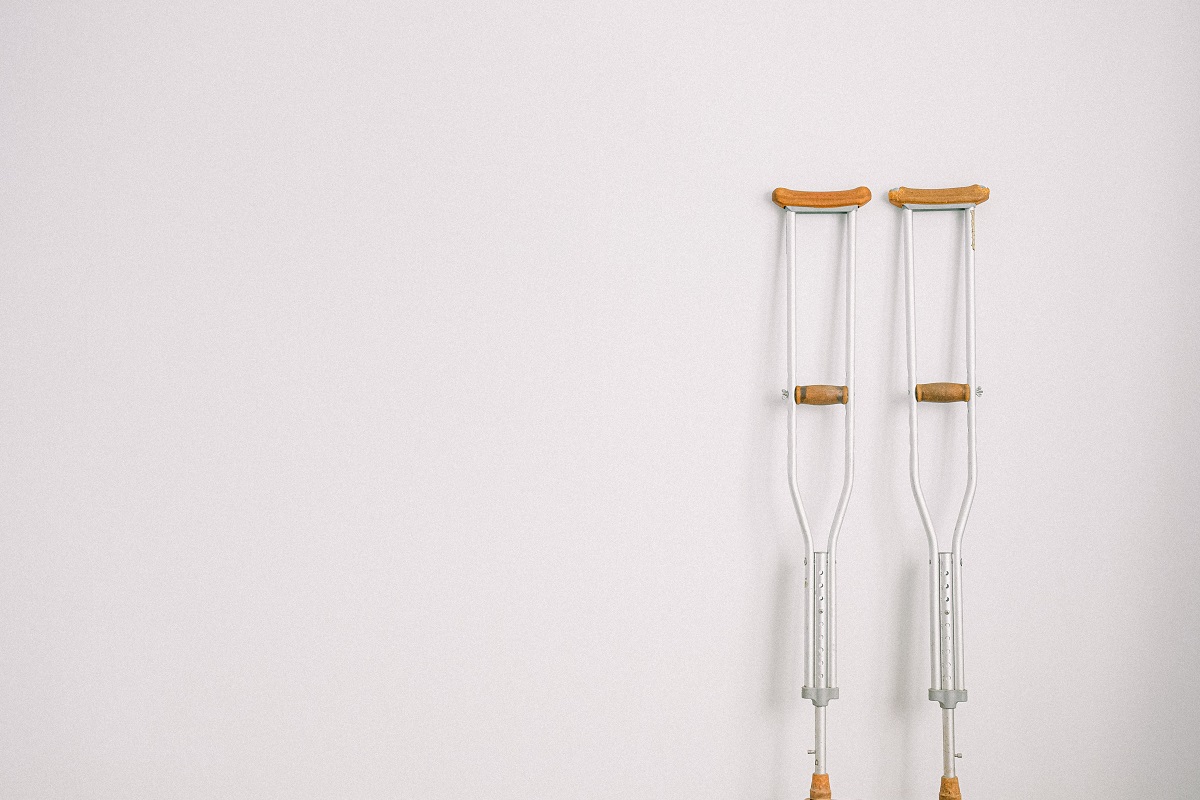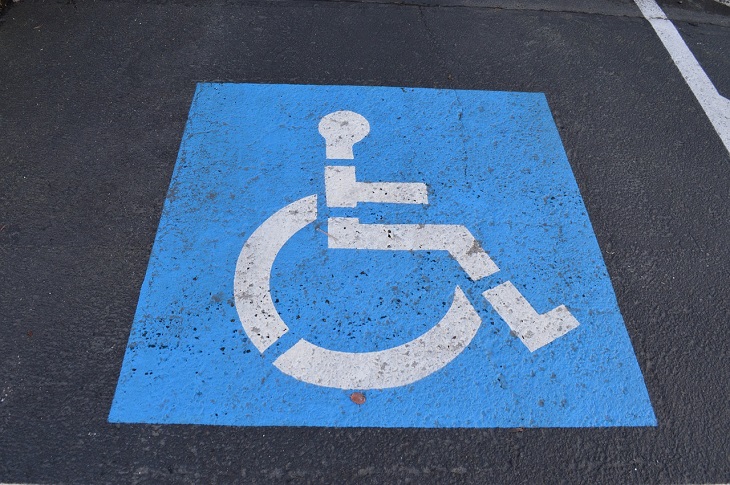4 Things You Should Know About Disabled Parking If You’re On Crutches

If you sustain an injury, your life can temporarily get a lot more difficult if you need to use crutches to get around. But there is one thing that can make walking around a bit easier: if you apply for a temporary handicap parking permit, you can get access to closer parking places so that you don’t have to walk as far when you’re out and about.
Here’s everything you need to know about disabled parking on crutches.
1. Many types of injuries that require the use of crutches can end up helping you qualify for a handicap placard.
Using crutches typically means your doctor is recommending you keep weight off of an injured leg or foot so that an injury can heal and you can get back to full mobility as quickly as possible.
There are many injuries that could require the use of crutches, including:
- Achilles tendon ruptures
- Broken or sprained ankles
- Foot fractures
- Stress fractures
- Tibia fractures
- Pulled or strained muscles
- ACL injuries
Your doctor can suggest underarm crutches (which are the most commonly used crutches in the US) or forearm crutches (which have an open cuff that grips your arms while you’re using them).
Underarm crutches can be used for most injuries, but they can cause sore underarms. Sometimes doctors will suggest the forearm crutches if you have a more long-term injury that will require the use of crutches for an extended period of time. These do tend to give you more control over your movements and are easier to navigate on uneven terrain.
When you get your crutches, make sure to adjust them to your height so that you can move about more comfortably, and follow your doctor’s advice on how long to use the crutches.

2. You can get a disabled parking permit if you need crutches.
Getting a handicap parking permit when you are on crutches can be a great way to take care of yourself and better support your healing. Check with your doctor to see if they think you could benefit from a handicap placard. Typically, people who require crutches apply for a temporary disability parking permit; these are generally valid for around three months (although this does depend on the state you live in).
You can easily get a permit application from your state’s Department of Motor Vehicles (DMV), either in person or online. Then, have your doctor complete the medical certification portion of the application to verify that you do have a need for crutches, have limited mobility, and could benefit from access to closer parking places. You can submit your completed application to the DMV, and once approved, you should get your placard in the mail.
On the chance that your disability is a long-term one that requires the use of crutches, you can apply for a permanent permit, which typically needs to be renewed every few years. Your doctor can help you determine which type of placard is right for you.
3. It might be possible for you to drive with crutches.
It’s possible that you’re allowed to drive even if you require the use of crutches, but it’s probably not the best idea. It’s not technically illegal to drive with a broken or injured leg or foot (if it’s on your left side), but you should definitely follow your doctor’s instructions.
If they recommend you skip driving while your injury is healing, you should listen to them. Plus, you would never want to get pulled over by law enforcement or get in an accident and be fined, ticketed, or charged with a crime because you were driving in an unsafe manner because of your injury.
Even if you’re not the driver of the vehicle, you can still use your handicap parking placard as a passenger in the car, so you can still always get all of the advantages of a permit even if you’re not in the driver’s seat.

4. There are a few things to keep in mind when using your disabled parking permit.
So, can a person with crutches park in a handicapped parking space? As long as you have a valid, up-to-date handicap placard, you are permitted to park in any designated handicapped parking places (which are usually marked with blue or white paint, posted signs, and an International Symbol of Access of a wheelchair).
Handicap parking on crutches can be really useful so that you don’t have to walk as far to get to your destination. Less time walking with your crutches means you will have more energy, and you most likely won’t experience as much discomfort in your injured limb and your underarm area.
Just remember to follow all posted signs and only use your handicap placard if you’re the driver or passenger (that means no lending it out to friends or family!). If you require another temporary placard after yours has expired, renew your placard with the DMV. Then you can focus on healing your injury and getting yourself back on your feet!
Featured image by Anna Shvets on Pexels